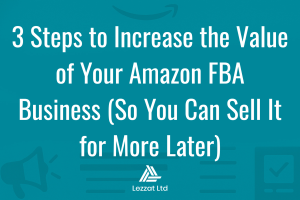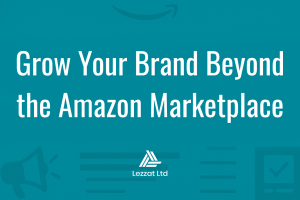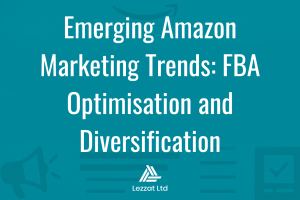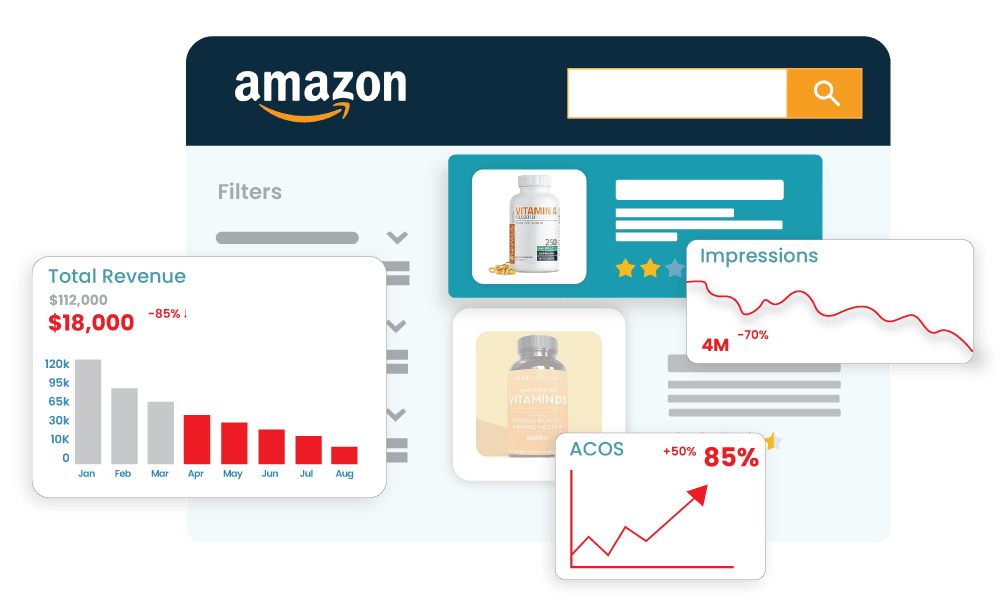Selling on Amazon is one of the most powerful ways to build a profitable, scalable business from your laptop. But here’s the part many sellers discover a bit late: you’re not just growing sales, you’re quietly building an asset. And one day, that asset could be sold for a life-changing amount.
The question is: will your Amazon FBA business be worth a basic multiple… or a premium one?
In 2025, buyers are more selective than ever. They’re not just browsing for any FBA store with decent revenue. They’re looking for clean books, defensible brands, low owner involvement, and a clear growth story. The businesses that tick those boxes are the ones getting strong offers and smooth exits.
In this guide, we’re going to walk through how to grow your Amazon FBA business in a way that also increases its resale value. By the end, you’ll know what serious buyers look for, how valuations really work, and how to set things up so that when you’re ready to sell your Amazon FBA business, you’re negotiating from a position of strength – not desperation.
Step 1: Think Like a Buyer. Valuation and Exit Strategy from Day One
Most sellers treat exit planning as something they’ll “sort out later”. The smart ones reverse that thinking. They build Amazon FBA business growth around what buyers will eventually want to see.
Understanding how your Amazon FBA business is valued
Smaller Amazon businesses are usually valued on Seller’s Discretionary Earnings (SDE). That’s essentially:
Net profit + owner’s salary + genuine one-off or discretionary expenses.
Larger brands may be valued on EBITDA instead, but the idea is the same: buyers want a clear, honest picture of how much money the business really makes over the last 12–24 months.
From there, a multiple is applied. In today’s market, many FBA businesses trade somewhere around 2.5–4× SDE (roughly 30–48× monthly net profit). Strong brands with clean books, diversified revenue and low owner hours sit at the higher end. Messy finances, heavy seasonality or one “hero” SKU holding everything up will drag you down.
A simple mental formula you’ll often see is:
Estimated value ≈ Inventory at landed cost + (Monthly net profit × multiple)
It won’t match a broker’s spreadsheet line-for-line, but it gives you a good feel for what each improvement in profit or risk reduction does to your potential exit.
Key valuation drivers include:
• Profit trend – flat is okay, growing is better, choppy is a warning sign.
• Age of business – more trading history across different seasons and ad climates equals more confidence.
• Seasonality – buyers want to see 12–24 months of data so they aren’t surprised by quiet periods.
• Product mix – multiple profitable SKUs beat a single risky bestseller.
• Owner involvement – if it looks like a full-time job, your multiple suffers; if it’s a system with light oversight, it becomes more attractive.
If your endgame is to sell your Amazon FBA business, start tracking these now, not in the six weeks before you talk to buyers.
Choosing the business model that actually builds asset value
Almost anyone can start some kind of Amazon business, but not all models produce the same long-term value.
Let’s quickly break down the three big ones:
1. Reseller / wholesale (selling other brands on existing listings)
• Quick to start and often cheaper upfront.
• You piggyback on existing brand recognition.
• But you rarely build a defensible asset. Competition is high, margins can be thin, and buyers know anyone can jump onto the same listing.
2. Private label (your brand on generic or lightly customised products)
• You have more control over brand, pricing and positioning.
• With trademarks and Brand Registry, you start to build a moat.
• Still competitive, but now you’ve got a brand buyers can work with.
3. Proprietary/branded products (truly unique or significantly improved SKUs)
• Full control over quality, pricing and customer experience.
• Harder for competitors to copy.
• Your brand can live beyond Amazon alone.
Reseller models can still be sold, especially at the right size and margin, but if your goal is a premium exit, you’ll usually want to transition towards private label or proprietary products over time. That’s where buyers see real brand value.
Building an “exit-ready” financial picture
Proper bookkeeping isn’t just for tax season – it’s a major value driver.
Buyers will expect:
• 12–24 months of accrual-based P&L (not just cash-based exports from Seller Central).
• Monthly breakdowns of sales, profits, margins and expenses.
• SKU-level unit economics – landed cost per unit, gross margin, return rate, TACoS/ACOS, inventory turns.
• Clear evidence you understand the Amazon fee stack: referral fees, FBA fees, storage, returns, inbound costs and advertising.
If that sounds like a lot, that’s because it is – which is exactly why organised sellers stand out. Don’t be afraid to bring in an accountant who understands eCommerce. Poor or incomplete books are one of the fastest ways to lose good buyers or leave money on the table.
Setting realistic expectations about your exit
Once your numbers are in order, you can start asking sensible questions:
• Where do we sit on profit and margin compared with typical exits in our space?
• Is our Amazon FBA business growth stable enough that a buyer can confidently step in?
• Are we closer to a “quick deal at a fair price” or a “strategic sale at a premium”?
Just like selling a house, you’ll need to understand market conditions, recent comparable deals and buyer appetite. The goal isn’t to obsess over a single number – it’s to avoid fantasies that lead to frustration later.
Step 2: De-Risk and Systemise. Turn Your Store into a Transferable Asset.

Once you’ve got a handle on valuation and exit strategy, the next stage is making your Amazon FBA business something a buyer can take over without panic.
The more you remove risk and dependency on you as the owner, the more valuable your business becomes.
Documenting your Amazon FBA business like a pro
Think about what a buyer needs to see to say “yes” with confidence. Over time, you should be building a simple but robust “data room” that includes:
• 24–36 months of accrual P&L with clear add-backs.
• Bank statements and filed tax returns.
• SKU-level reports: sales, margins, return rates, inventory ageing, IPI history.
• Supplier details: contracts, payment terms, lead times, quality control reports and compliance certificates.
• Brand and IP: trademarks, Brand Registry evidence, domain names, logos and creative assets.
• Advertising exports: PPC bulk files, search term reports, negative keyword lists, historical TACoS and ACOS trends.
• Account health snapshots showing a clean and compliant Seller Central.
You don’t need this perfect from day one, but the earlier you start organising, the easier it is when real buyers appear.
Systemising operations, so the business doesn’t live in your head
A buyer isn’t just buying your products; they’re buying your systems. They’ll want proof that the business won’t fall apart the moment you step away.
Start creating SOPs (Standard Operating Procedures) for:
• Product research and development
• Inventory planning, purchase orders and freight
• Supplier communication and quality checks
• Listing creation and regular optimisation
• PPC structure, optimisation rhythms and reporting
• Customer support and review management
• Launches, promotions and deal planning
If you’re already using VAs or contractors, map out:
• Who they are and what they do
• Their hours and responsibilities
• Their rates and contracts
• Whether they’re willing to continue after a sale
From a buyer’s point of view, an Amazon FBA business that runs on clear processes, with a small, stable team and minimal owner hours, is far more attractive than a high-revenue operation powered entirely by the founder’s brain.
Building a resilient supplier and inventory setup
Suppliers and stock are two of the biggest levers for both growth and risk.
To impress buyers:
• Maintain primary and backup suppliers for key SKUs.
• Clarify lead times, MOQs and contingency plans for delays.
• Avoid extreme stockpiling in FBA, but don’t flirt with constant stockouts either.
• Track inventory turns and storage fees to show you understand your cash and logistics cycles.
If your growth is constrained by cash flow – which is very common – consider carefully structured working capital. The aim is to:
• Close the gaps between payouts and restocks.
• Give yourself enough capital to order deeper where it’s genuinely profitable.
• Scale towards the “sweet spot” profit level buyers love (for example, many see net margins around 20% as a healthy sign).
Funding isn’t about taking on reckless debt. It’s about using capital as a tool to grow your Amazon FBA business to the size and stability that commands better exit offers.
Keeping your account health and brand presence spotless
Account health is one of those things buyers quietly obsess over.
You’ll want to keep:
• Order defect rate within Amazon’s thresholds
• Late shipment and cancellation rates (for any FBM) as low as possible
• No serious unresolved violations or policy issues
On top of that, widen your footprint beyond Amazon:
• Build a simple but solid brand website with email capture and basic content.
• Use social media to show real-world product use, behind-the-scenes insights and social proof.
• Capture reviews consistently and showcase them.
Even a modest direct-to-consumer site, some organic traffic and an active email list can strengthen your perceived moat. It signals to buyers that your Amazon FBA business is part of a brand, not just a set of listings.
Step 3: Package, Position and Sell Your Amazon FBA Business Like an Asset
With your numbers, systems and brand foundations in place, the final step is how you actually present and sell your business when the time comes.
This is where all the quiet work you’ve done pays off.
Making the transfer straightforward and policy-safe
You don’t technically “sell a Seller Central account”. You sell the business behind it – either as a share/equity sale (where the legal entity stays in place) or an asset sale (where the buyer opens their own account and assets are migrated).
Whichever route you choose, plan out:
• How you’ll inform Amazon of an ownership change (if keeping the same account).
• How and when you’ll update bank details, tax info, contact details and users.
• The process for migrating listings, brand assets and Brand Registry roles if you’re doing an asset sale.
• A 30–60–90 day training plan: calls, email support and clear milestones for handing over operations.
• How you’ll share PPC structures, inventory forecasts, logistics info and key contacts.
Buyers love a seller who has already mapped this out. It reduces perceived risk, shortens the due diligence process and often results in stronger offers.
Presenting a clear growth story for the buyer
The business you’ve built is one part of the appeal. The other part is what comes next.
When you’re preparing to sell your Amazon FBA business, include a buyer-facing growth plan that shows:
• Untapped keywords and niches revealed by your existing data.
• Logical product extensions and variations you’ve researched but haven’t launched.
• Opportunities in other marketplaces or regions.
• Ways to increase external traffic (SEO, paid social, influencers, B2B, email).
• Scenarios where funding could accelerate growth safely (for example, “if you added £X in working capital, you could increase stock turns on SKUs A and B and reach £Y net profit within 12–18 months”).
Think of it as a “post-acquisition playbook”. You’re not just selling what the business has been – you’re selling what it can be in the right hands.
Choosing how to actually sell your Amazon FBA business
You’ve built the asset. Now you need to choose how to take it to market. There are four main routes:
1. Online marketplace
• You list your FBA business on a dedicated business-for-sale platform.
• You control the listing, answer questions and manage NDAs.
• Good for many small to mid-sized businesses looking for a broad buyer pool.
2. Broker
• A broker helps with valuation, packaging, buyer outreach and negotiation.
• Particularly useful for larger or more complex businesses.
• You’ll pay a success fee, but you’ll likely save a lot of time and avoid common mistakes.
3. Direct approach
• You contact aggregators, funds or strategic buyers yourself.
• Potentially lower costs, but you’ll need to handle screening, NDAs and process management.
• Works best if you already have relationships or very clear targets.
4. Auction-style or competitive processes
• Suitable for very attractive brands with strong demand.
• Can drive price up, but admin, fees and complexity are higher.
There’s no single “right” answer. It depends on your business size, your timeline and how hands-on you want to be. What matters most is that by the time you pick a route, your documentation and narrative are tight.
Negotiating with clarity rather than emotion

Finally, when offers start coming in, it’s easy to get caught up emotionally. This is where your preparation really pays off.
Go into negotiations with:
• A clear range for what you’ll accept (and what you won’t).
• An understanding of whether you prioritise speed or the absolute highest number.
• A calm, factual approach to questions about your past decisions and numbers.
• Openness to deal structure – for example, some cash upfront plus an earn-out tied to future performance, if it creates a win–win.
You’ve spent years building your Amazon FBA business. Let your numbers, systems and growth story do the heavy lifting, rather than haggling from a place of stress.
Bringing It All Together
If you want long-term success – and a meaningful exit – you need to think beyond day-to-day sales and build your Amazon FBA business as a transferable asset.
That means:
1. Thinking like a buyer early
Understanding SDE, multiples and valuation drivers from the moment you start planning how to grow your Amazon FBA business.
2. De-risking and systemising
Turning messy, founder-dependent operations into documented, scalable systems with strong suppliers, clean finances and solid account health.
3. Packaging and selling strategically
Presenting your business with a clear growth story, policy-safe transfer plan and the right go-to-market route for your size and goals.
Do that, and you’re not just chasing the next month’s revenue. You’re building a brand and an operation that serious buyers will compete for – and that can give you the freedom to decide what’s next.
If you’d like help tailoring this into a version branded for your agency (with a CTA, internal links and UK-specific references), I can adapt the article layout, add meta data, and suggest sub-headings for SEO while keeping the full length and tone.
If you’re looking to scale your Amazon FBA business, maximise its long-term value, or prepare for a future exit, our team at Lezzat is here to help. As Amazon experts, we’ll guide you through every stage, from optimising your operations and brand foundations to building a growth strategy that attracts serious buyers. And if you’d like more inspiration, don’t forget to browse our blogs and case studies, where we share real-world examples, detailed breakdowns, and practical strategies you can start using today.






